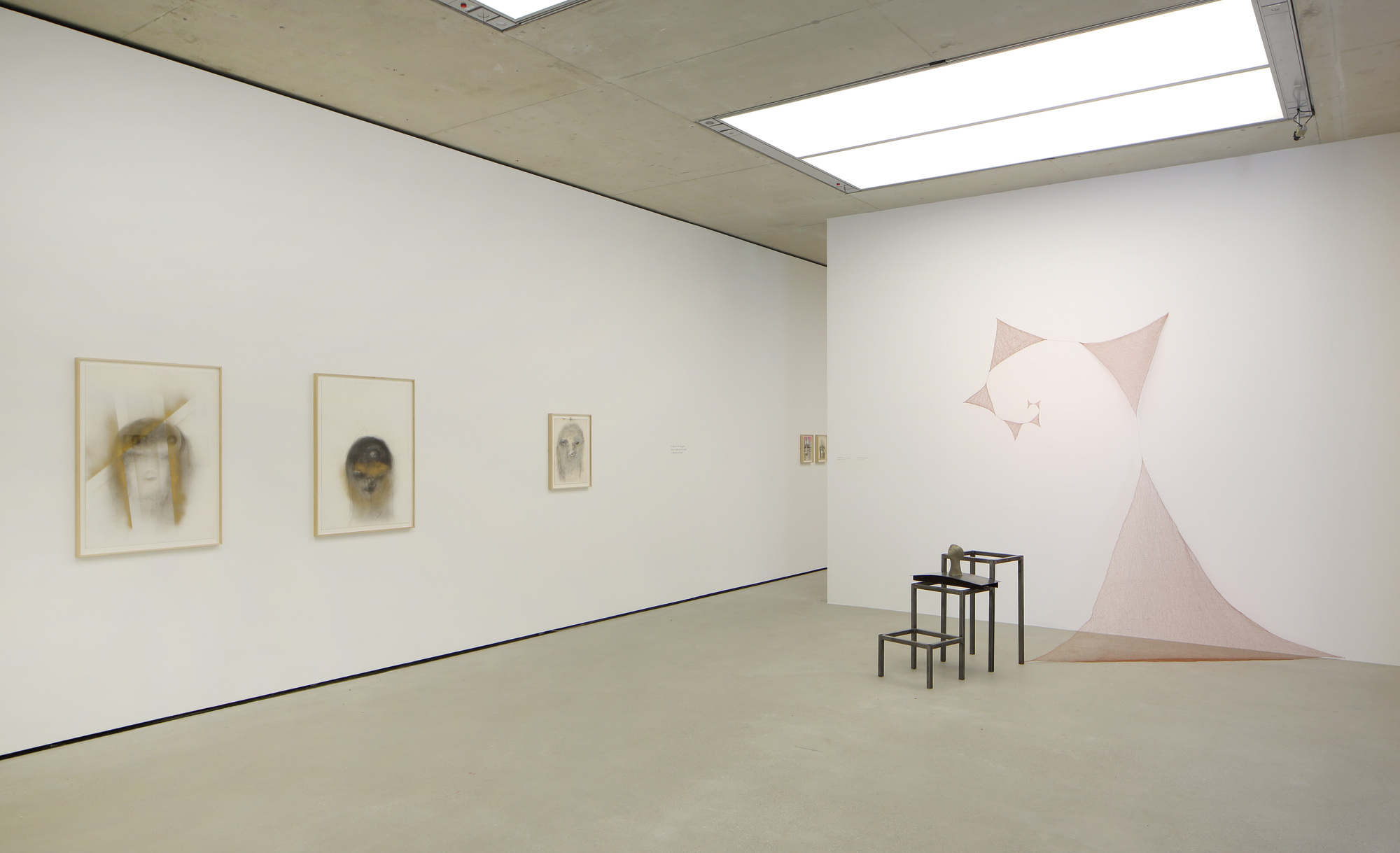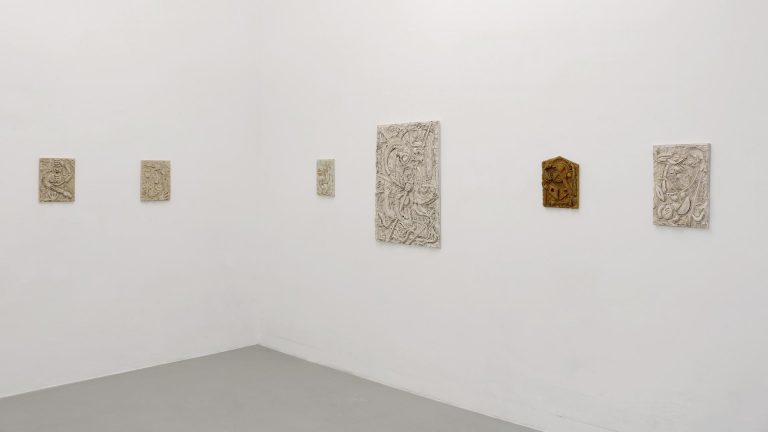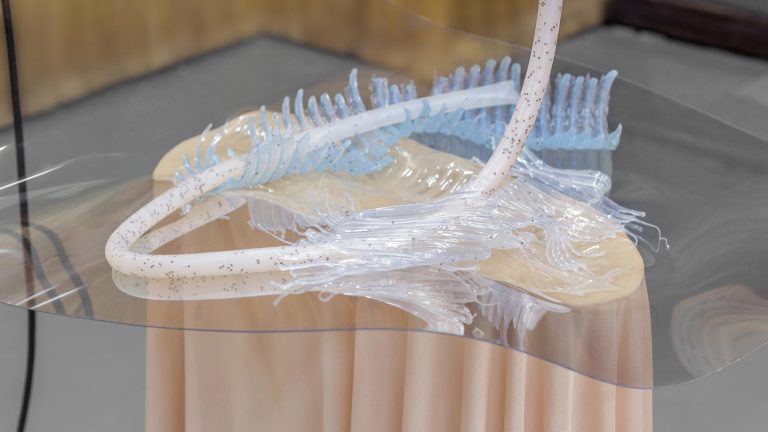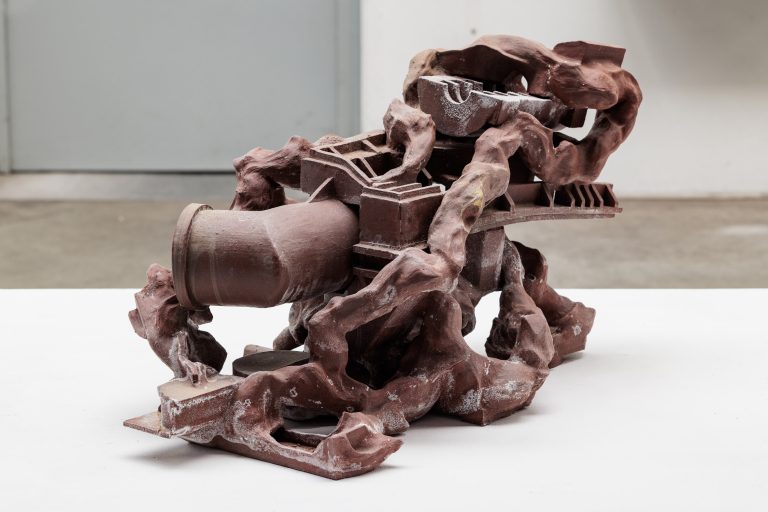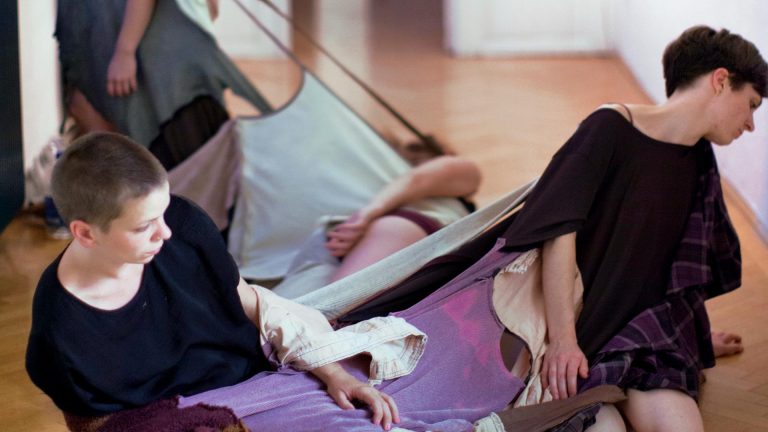Artist: Marisa Merz
Exhibition title: The Sky Is a Great Space
Curated by: Sabine Breitwieser, Director, with Marijana Schneider
Venue: Museum der Moderne Salzburg, Salzburg, Austria
Date: May 25 – November 4, 2018
Photography: all images copyright and courtesy of the artist and Museum der Moderne Salzburg
With Marisa Merz. Il cielo è grande spazio / The Sky Is a Great Space, the Museum der Moderne Salzburg presents for the first time in Austria and after more than ten years in the German-speaking countries a comprehensive retrospective of the oeuvre of the outstanding Italian artist Marisa Merz (b. Turin, IT, 1926).
Salzburg, 24 May 2018. Spanning five decades, the exhibition Il cielo è grande spazio / The Sky Is a Great Space at the Museum der Moderne Salzburg offers a once -in-a-lifetime opportunity to explore the work of Marisa Merz, who is regarded as the only female representative of the Arte Povera. Opening with works from her most recent large drawings and expansive environments, the presentation traces the evolution of Merz’s art through numerous paintings and drawings, wire and wax installations, and the enigmatic sculptural heads and faces from the 1990s and 1980s to the mid-1960s including the so-called ”Living Sculpture” (1966). Quoting a poem by the artist in the exhibition title, Marisa Merz’s poems round out the installation. “One goal of my tenure as director has been to turn the spotlight on eminent women artists with major solo exhibitions. After acclaimed retrospectives of the works of artists including Etel Adnan, Simone Forti, Andrea Fraser, Ana Mendieta, Carolee Schneemann, and, most recently, Charlotte Moorman, we continue this strand in our programming in 2018 with Marisa Merz and Anna Boghiguian. An extensive show dedicated to Merz, an outstanding and groundbreaking Italian artist, was one of first projects I envisioned when I started at the Museum der Moderne Salzburg. I am very pleased that, in cooperation with the Metropolitan Museum of Art and the Hammer Museum as well as the Fondazione Merz, we now make this vision a reality,” Sabine Breitwieser, Director of the Museum der Moderne Salzburg, who organizes the presentation in Salzburg together with guest curator Connie Butler, notes.
Arte Povera emerged in industrialized Italy in the 1960s and drew attention with works made out of mundane and unconventional “poor” materials. Rather than promulgating a stylistic or ideological creed, however, the Poveristi articulated their convictions by rebelling against the precepts and restrictions of the art world. In the 1960s, Marisa Merz translates the interplay between her roles as artist, wife, and mother into a unique creative idiom. Defying the formal conventions of visual art, she largely relies on pliable materials such as aluminum, copper wire, nylon, wax, and unfired clay. To the artist’s mind, her work is not a chronological succession of self – contained objects; she leaves most of her pieces untitled and undated and remakes and transforms shapes and elements of works in varying arrangements. Although she articulates the unity of art and life perhaps more radically than any other artist, her work and her influence on others are not widely recognized in the international art world until fairly late in her career. With the Golden Lion for lifetime achievement she received at the 55th Biennale di Venezia in 2013 and the major exhibition that was presented in New York and Los Angeles last year, Merz’s oeuvre is at long last receiving the international recognition it deserves.
In addition to paintings and drawings in an unmistakable style, Merz creates three-dimensional works, for which she often resorts to pliable materials such as aluminum, metal wire, copper, and wax. In 1966—at the time, she thought of her role as mother as no less important than her work on her art— her “Living Sculpture” came into being in her kitchen in Turin: sprawling colossal pipe-like aluminum constructions combining sharp metal edges with soft biomorphic contours. Around the same time, Merz also made a number of other works out of nontraditional materials, including sculptures composed of blankets she rolled up, tied up with leather straps and nylon strings, and staged in collaboration with her husband, the artist Mario Merz, in a performance at the beach in Fregene near Rome in 1970; a wood swing she made for her daughter Beatrice, which blends the formal rigor of minimalist sculpture with child’s play; and a series of knit nylon and copper wire objects that includes the iconic Scarpette (little shoes), which the artist sometimes wore.
In the 1970s, Merz combined and extended her characteristic works made of humble materials and objects—copper wire, bowls filled with saltwater, knitting needles—in complex installations. After 1975, she began work on a number of Testine or small heads, many of them roughly modeled in unfired clay. From the 1980s onward, the—almost exclusively female—heads in her drawings and paintings became emblematic of the artist’s oeuvre; her formats have grown increasingly larger since the 1990s, a trend that culminates in the most recent works on view in the exhibition, which date from the 2010s. Merz continues to integrate individual pieces into multimedia installations of varying size and complexity. Her paintings and works of graphic art combine complex subjects with collage elements made of a variety of materials such as adhesive tape, mirrors, paper clips, bottle caps, and colored metal pigments. A characteristic example is the group of large-format works on paper representing winged angels, in which striking beauty contrasts with a surprising absence of sentimentality. The artist’s engagement with light and sound, as in the works integrating water or mute musical instruments, are further evidence of her creative versatility.
Organized in the United States by the Hammer Museum, Los Angeles, and The Metropolitan Museum of Art, New York. Curated by Connie Butler, Chief Curator, Hammer Museum, and Ian Alteveer, Curator, Department of Modern and Contemporary Art, The Metropolitan Museum of Art. The presentation in Europe is jointly organized by the Fundação de Serralves— Museu de Arte Contemporânea, Porto, and the Museum der Moderne Salzburg. In cooperation with the Fondazione Merz, Turin.
Curator at the Museum der Moderne Salzburg: Sabine Breitwieser, Director, with Marijana Schneider, Curatorial Assistant
DelMonico Books Prestel has released a publication (in English) accompanying the exhibition. A catalogue containing a selection of texts in German translation is published by the Museum der Moderne Salzburg.
Exhibition view, Marisa Merz, Il cielo è grande spazio / The Sky Is a Great Space © Museum der Moderne Salzburg, Photo: Rainer Iglar
Exhibition view, Marisa Merz, Il cielo è grande spazio / The Sky Is a Great Space © Museum der Moderne Salzburg, Photo: Rainer Iglar
Exhibition view, Marisa Merz, Il cielo è grande spazio / The Sky Is a Great Space © Museum der Moderne Salzburg, Photo: Rainer Iglar
Exhibition view, Marisa Merz, Il cielo è grande spazio / The Sky Is a Great Space © Museum der Moderne Salzburg, Photo: Rainer Iglar
Exhibition view, Marisa Merz, Il cielo è grande spazio / The Sky Is a Great Space © Museum der Moderne Salzburg, Photo: Rainer Iglar
Exhibition view, Marisa Merz, Il cielo è grande spazio / The Sky Is a Great Space © Museum der Moderne Salzburg, Photo: Rainer Iglar
Exhibition view, Marisa Merz, Il cielo è grande spazio / The Sky Is a Great Space © Museum der Moderne Salzburg, Photo: Rainer Iglar
Exhibition view, Marisa Merz, Il cielo è grande spazio / The Sky Is a Great Space © Museum der Moderne Salzburg, Photo: Rainer Iglar
Exhibition view, Marisa Merz, Il cielo è grande spazio / The Sky Is a Great Space © Museum der Moderne Salzburg, Photo: Rainer Iglar
Exhibition view, Marisa Merz, Il cielo è grande spazio / The Sky Is a Great Space © Museum der Moderne Salzburg, Photo: Rainer Iglar
Marisa Merz, Untitled, n. d., Unfired clay, thumbtacks, copper wire, gold leaf, The artist and Fondazione Merz, Turin, Photo: Renato Ghiazza, Courtesy Archivio Merz, Turin
Marisa Merz, Untitled, n. d., Metallic paint, pastel, ink, marker, and adhesive tape on paper, Gladstone Gallery New York and Brussels, Photo: Renato Ghiazza, Courtesy the artist and Gladstone Gallery, New York and Brussels
Marisa Merz, Untitled, 1968, Nylon thread, iron nails, The artist and Fondazione Merz, Turin, Photo: Renato Ghiazza, Courtesy Archivio Merz, Turin
Marisa Merz, Untitled, 1975, Copper wire, The artist and Fondazione Merz, Turin, Photo: Renato Ghiazza, Courtesy Archivio Merz, Turin
Marisa Merz, Untitled, 1977, Nylon gauze, iron, stone, The artist and Gladstone Gallery New York and Brussels, Photo: David Regen, Courtesy Gladstone Gallery, New York and Brussels
Marisa Merz, Testa (Head), 1984/95, Unfired clay, wax, tin, lead, small steel table, The artist and Fondazione Merz, Turin, Photo: Paolo Pellion di Persano
Marisa Merz, Untitled, n. d., Mixed media with adhesive tape and metal, mirror, The artist and Fondazione Merz, Turin, Photo: Agostino Osio, Courtesy Galleria Christian Stein, Milan
Marisa Merz, Untitled, n. d., Unfired clay, gold leaf, paint, iron tripod, Collection of Anish Kapoor, Photo: David Regen, Courtesy Gladstone Gallery, New York and Brussels
Marisa Merz, Untitled, 2009/10, Mixed media on paper, stone and clay sculpture, copper sheet, wooden panels, MAXXI Museo nazionale delle arti del XXI secolo, Rome, Photo: Patrizia Tocci, Courtesy Fondazione MAXXI, Rome
Marisa Merz, Untitled, 1977, Table, copper wire, flower, metal rods, Collection of Emilio and Luisa Marinoni, Lurago Marinone, Italy, Photo: Mario Corti, Courtesy Collection Emilio and Luisa Marinoni, Lurago Marinone, Italy
Marisa Merz, Untitled, n. d., Graphite, metallic paint, pastel, ballpoint pen, and adhesive tape on paper, The artist and Fondazione Merz, Turin Photo: Renato Ghiazza, Courtesy Archivio Merz, Turin
Marisa Merz, Untitled, 1994, Wooden screens with copper wire, The artist and Fondazione Merz, Turin, Photo: Simon d’Exéa, Courtesy Archivio Merz, Turin
Marisa Merz, Living Sculpture, 1966, Aluminum, Tate: purchased with funds provided by an anonymous donor, 2009, Photo: © Tate, London 2017
Marisa Merz, Fontana, 2015 (Fountain), Lead, water, engine, desert rose, The artist and Fondazione Merz, Turin






